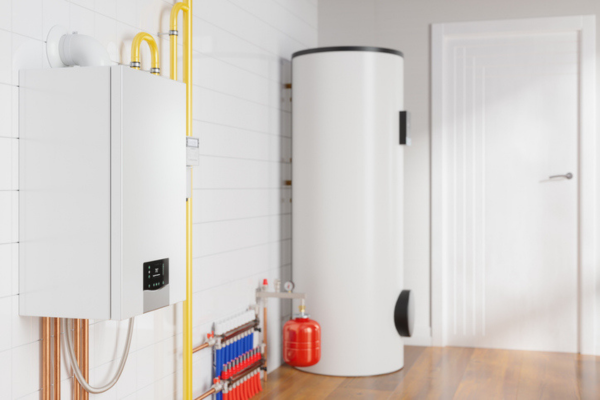
A storage tank hot water system uses an insulated cylinder to heat and store water for household use. Electric models heat the water with internal elements, while gas units use a burner and flue. Solar systems may rely on solar energy alone or combine solar collectors with a gas or electric booster to ensure hot water is always available.
Current regulations and safety requirements
Australian standards require hot water to be stored at 60 °C to prevent bacterial growth, particularly Legionella. However, water delivered to taps used for personal hygiene must not exceed 50 °C, which is achieved using a tempering or thermostatic mixing valve.
The National Construction Code 2022, introduced in October 2023, also places greater focus on energy efficiency. Systems must be installed by licensed plumbers and electricians and include safety measures like temperature and pressure relief valves. Tanks must also be secured and installed in accessible locations for safe servicing.
Why storage tanks suit renovations
Storage tank systems remain popular for Australian renovations because they provide reliable hot water for multiple outlets at once. They are especially suited to larger households and homes with high peak demand.
When paired with solar or heat pump technology, storage tanks can meet energy efficiency goals and help achieve 7‑Star NatHERS ratings. They also qualify for rebates in some states, making them cost‑effective for sustainability‑focused upgrades.
Types of storage tank systems
Electric storage
Electric tanks are affordable to install and work well in apartments and smaller homes. They can be costly to run if used on peak electricity tariffs but are efficient when combined with solar PV or off‑peak plans.
Gas storage
Gas tanks heat quickly and recover faster than electric models, making them ideal for families. They are usually installed outdoors and have lower running costs than standard electric units.
Heat pump storage
Heat pump tanks use ambient air to heat water and are much more efficient than standard electric systems. They are best installed outdoors and work well in most Australian climates, though performance can drop in very cold areas.
Solar storage
Solar storage tanks use roof‑mounted collectors to heat water, with a booster system for cloudy days or high demand. They have low running costs and are eligible for government incentives, but they require sufficient roof space and sunlight.
Advantages and considerations
Storage tanks provide consistent hot water and are compatible with multiple energy sources, including solar and heat pumps. They are generally less expensive to buy and install than tankless systems and are straightforward to replace in existing homes.
However, they take up more space and can lose heat if poorly insulated. They may also require plumbing or electrical upgrades during renovations, especially in older homes.
Tips for renovators
- Place the tank close to bathrooms or kitchens to reduce water waste and heat loss
- Use a tempering valve to ensure safe outlet temperatures
- Choose energy‑efficient models to lower running costs and qualify for rebates
- Make sure installation meets Australian Standards and NCC requirements
- Plan for ongoing maintenance with easy access for servicing





